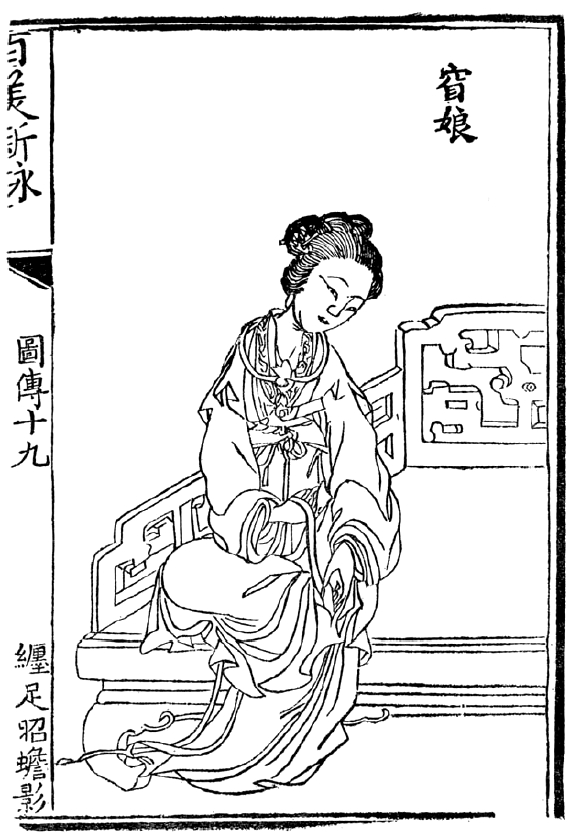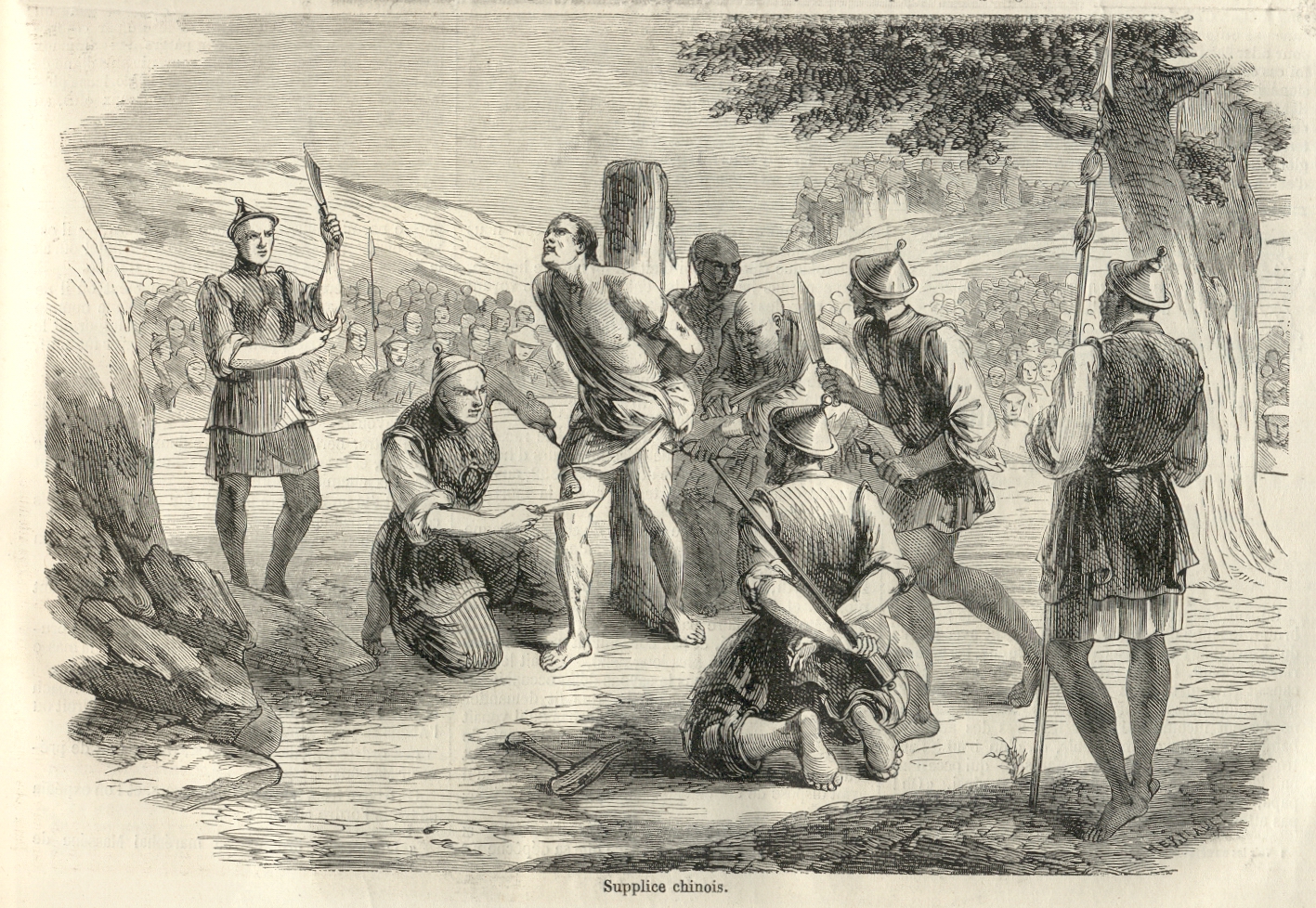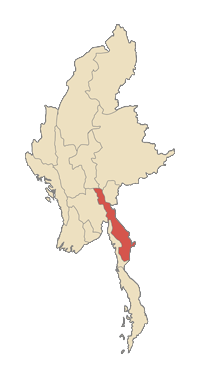|
Mutilation
Mutilation or maiming (from the Latin: ''mutilus'') refers to severe damage to the body that has a ruinous effect on an individual's quality of life. It can also refer to alterations that render something inferior, ugly, dysfunctional, or imperfect. In modern times, the term has an overwhelmingly negative connotation. Terminology In 2019, Michael H. Stone, Gary Brucato, and Ann Burgess proposed formal criteria by which "mutilation" might be systematically distinguished from the act of "dismemberment," as these terms are commonly used interchangeably. They suggested that dismemberment involves "the entire removal, by any means, of a large section of the body of a living or dead person, specifically, the head (also termed decapitation), arms, hands, torso, pelvic area, legs, or feet." Mutilation, by contrast, involves "the removal or irreparable disfigurement, by any means, of some smaller portion of one of those larger sections of a living or dead person. The latter would ... [...More Info...] [...Related Items...] OR: [Wikipedia] [Google] [Baidu] |
Female Genital Mutilation
Female genital mutilation (FGM), also known as female genital cutting, female genital mutilation/cutting (FGM/C) and female circumcision, is the ritual cutting or removal of some or all of the external female genitalia. The practice is found in some countries of Africa, Asia and the Middle East, and within communities abroad from countries in which FGM is common. UNICEF estimated, in 2016, that 200 million women in 30 countries—Indonesia, Iraq, Yemen, and 27 African countries including Egypt—had been subjected to one or more types of FGM. Typically carried out by a traditional circumciser using a blade, FGM is conducted from days after birth to puberty and beyond. In half of the countries for which national statistics are available, most girls are cut before the age of five. Procedures differ according to the country or ethnic group. They include removal of the clitoral hood (type 1-a) and clitoral glans (1-b); removal of the inner labia; and removal of the inner and o ... [...More Info...] [...Related Items...] OR: [Wikipedia] [Google] [Baidu] |
Foot Binding
Foot binding, or footbinding, was the Chinese custom of breaking and tightly binding the feet of young girls in order to change their shape and size. Feet altered by footbinding were known as lotus feet, and the shoes made for these feet were known as lotus shoes. In late imperial China, bound feet were considered a status symbol and a mark of feminine beauty. However, footbinding was a painful practice that limited the mobility of women and resulted in lifelong disabilities. The prevalence and practice of footbinding varied over time and by region and social class. The practice may have originated among court dancers during the Five Dynasties and Ten Kingdoms period in 10th-century China, and gradually became popular among the elite during the Song dynasty. Footbinding eventually spread to lower social classes by the Qing dynasty (1636–1912). Manchu emperors attempted to ban the practice in the 17th century, but failed. In some areas, footbinding raised marriage prospects. It ... [...More Info...] [...Related Items...] OR: [Wikipedia] [Google] [Baidu] |
Dismemberment
Dismemberment is the act of cutting, ripping, tearing, pulling, wrenching or otherwise disconnecting the limbs from a living or dead being. It has been practiced upon human beings as a form of capital punishment, especially in connection with regicide, but can occur as a result of a traumatic accident, or in connection with murder, suicide, or cannibalism. As opposed to surgical amputation of the limbs, dismemberment is often fatal. In criminology, a distinction is made between offensive dismemberment, in which dismemberment is the primary objective of the dismemberer, and defensive dismemberment, in which the motivation is to destroy evidence. In 2019, Michael H. Stone, Gary Brucato and Ann Burgess proposed formal criteria by which "dismemberment" might be systematically distinguished from the act of "mutilation", as these terms are commonly used interchangeably. They suggested that dismemberment involves "the entire removal, by any means, of a large section of the body of a ... [...More Info...] [...Related Items...] OR: [Wikipedia] [Google] [Baidu] |
Slow Slicing
''Lingchi'' (; ), translated variously as the slow process, the lingering death, or slow slicing, and also known as death by a thousand cuts, was a form of torture and execution used in China from roughly 900 CE up until the practice ended around the early 1900s. It was also used in Vietnam and Korea. In this form of execution, a knife was used to methodically remove portions of the body over an extended period of time, eventually resulting in death. ''Lingchi'' was reserved for crimes viewed as especially heinous, such as treason. Some Westerners were executed in this manner. Even after the practice was outlawed, the concept itself has still appeared across many types of media. Etymology The term ''lingchi'' first appeared in a line in Chapter 28 of the third-century BCE philosophical text '' Xunzi''. The line originally described the difficulty in travelling in a horse-drawn carriage on mountainous terrain. Later on, it was used to describe the prolonging of a person's ago ... [...More Info...] [...Related Items...] OR: [Wikipedia] [Google] [Baidu] |
Breaking Wheel
The breaking wheel or execution wheel, also known as the Wheel of Catherine or simply the Wheel, was a torture method used for public execution primarily in Europe from antiquity through the Middle Ages into the early modern period by breaking the bones of a criminal or bludgeoning them to death. The practice was abolished in Bavaria in 1813 and in the Electorate of Hesse in 1836: the last known execution by the "Wheel" took place in Prussia in 1841. In the Holy Roman Empire it was a "mirror punishment" for highwaymen and street thieves, and was set out in the ''Sachsenspiegel'' for murder, and arson that resulted in fatalities. Punishment Those convicted as murderers, rapists, traitors and/or robbers to be executed by the wheel, sometimes termed to be "wheeled" or "broken on the wheel", would be taken to a public stage scaffold site and tied to the floor. The execution wheel was typically a large wooden spoked wheel, the same as was used on wooden transport carts and c ... [...More Info...] [...Related Items...] OR: [Wikipedia] [Google] [Baidu] |
Disembowelment
Disembowelment or evisceration is the removal of some or all of the organs of the gastrointestinal tract (the bowels, or viscera), usually through a horizontal incision made across the abdominal area. Disembowelment may result from an accident but has also been used as a method of torture and execution. In such practices, disembowelment may be accompanied by other forms of torture, or the removal of other vital organs. Disembowelment as torture If a living creature is disemboweled, it is invariably fatal without major medical intervention. Historically, disembowelment has been used as a severe form of capital punishment. If the intestinal tract alone is removed, death follows after several hours of gruesome pain. The victim will often be fully conscious while the torture is performed if the vital organs aren't damaged, and will be able to see their intestine being removed, but will eventually lose consciousness due to blood loss. However, in some forms of intentional disembo ... [...More Info...] [...Related Items...] OR: [Wikipedia] [Google] [Baidu] |
Burn
A burn is an injury to skin, or other tissues, caused by heat, cold, electricity, chemicals, friction, or ultraviolet radiation (like sunburn). Most burns are due to heat from hot liquids (called scalding), solids, or fire. Burns occur mainly in the home or the workplace. In the home, risks are associated with domestic kitchens, including stoves, flames, and hot liquids. In the workplace, risks are associated with fire and chemical and electric burns. Alcoholism and smoking are other risk factors. Burns can also occur as a result of self-harm or violence between people (assault). Burns that affect only the superficial skin layers are known as superficial or first-degree burns. They appear red without blisters and pain typically lasts around three days. When the injury extends into some of the underlying skin layer, it is a partial-thickness or second-degree burn. Blisters are frequently present and they are often very painful. Healing can require up to eight weeks and scarri ... [...More Info...] [...Related Items...] OR: [Wikipedia] [Google] [Baidu] |
World Health Organization
The World Health Organization (WHO) is a specialized agency of the United Nations responsible for international public health. The WHO Constitution states its main objective as "the attainment by all peoples of the highest possible level of health". Headquartered in Geneva, Switzerland, it has six regional offices and 150 field offices worldwide. The WHO was established on 7 April 1948. The first meeting of the World Health Assembly (WHA), the agency's governing body, took place on 24 July of that year. The WHO incorporated the assets, personnel, and duties of the League of Nations' Health Organization and the , including the International Classification of Diseases (ICD). Its work began in earnest in 1951 after a significant infusion of financial and technical resources. The WHO's mandate seeks and includes: working worldwide to promote health, keeping the world safe, and serve the vulnerable. It advocates that a billion more people should have: universal health care coverag ... [...More Info...] [...Related Items...] OR: [Wikipedia] [Google] [Baidu] |
United Nations
The United Nations (UN) is an intergovernmental organization whose stated purposes are to maintain international peace and international security, security, develop friendly relations among nations, achieve international cooperation, and be a centre for harmonizing the actions of nations. It is the world's largest and most familiar international organization. The UN is headquarters of the United Nations, headquartered on extraterritoriality, international territory in New York City, and has other main offices in United Nations Office at Geneva, Geneva, United Nations Office at Nairobi, Nairobi, United Nations Office at Vienna, Vienna, and Peace Palace, The Hague (home to the International Court of Justice). The UN was established after World War II with Dumbarton Oaks Conference, the aim of preventing future world wars, succeeding the League of Nations, which was characterized as ineffective. On 25 April 1945, 50 governments met in San Francisco for United Nations Conference ... [...More Info...] [...Related Items...] OR: [Wikipedia] [Google] [Baidu] |
Kayan People (Myanmar)
The Kayan are a sub-group of Red Karen (Karenni people), Tibeto-Burman ethnic minority of Myanmar (Burma). The Kayan consists of the following groups: Kayan Lahwi (also called Padaung, ), Kayan Ka Khaung (Gekho), Kayan Lahta, Kayan Ka Ngan. Kayan Gebar, Kayan Kakhi and, sometimes, Bwe people (Kayaw). They are distinct from, and not to be confused with, the Kayan people of Borneo. Padaung (Yan Pa Doung) is a Shan term for the Kayan Lahwi (the group in which women wear the brass neck rings). The Kayan residents in Mae Hong Son Province in Northern Thailand refer to themselves as Kayan and object to being called Padaung. In ''The Hardy Padaungs'' (1967) Khin Maung Nyunt, one of the first authors to use the term "Kayan", says that the Padaung prefer to be called Kayan. On the other hand, Pascal Khoo Thwe calls his people Padaung in his 2002 memoir, ''From the Land of Green Ghosts: A Burmese Odyssey.'' In the late 1980s and early 1990s due to conflict with the military regime ... [...More Info...] [...Related Items...] OR: [Wikipedia] [Google] [Baidu] |
Karen People
The Karen, kjp, ပ်ုဖၠုံဆိုဒ်, my, ကရင်လူမျိုး, , th, กะเหรี่ยง ( ), also known as the Kayin, Kariang or Kawthoolese, are an ethnolinguistic group of Sino-Tibetan language–speaking peoples. The group as a whole is heterogeneous and disparate as many Karen ethnic groups do not associate or identify with each other culturally or linguistically. These Karen groups reside primarily in Kayin State, southern and southeastern Myanmar. The Karen, approximately five million people, account for approximately seven percent of the Burmese population. Many Karen have migrated to Thailand, having settled mostly on the Myanmar–Thailand border. A few Karen have settled in the Andaman and Nicobar Islands, India, and other Southeast Asian and East Asian countries. The Karen groups as a whole are often confused with the Padaung tribe, best known for the neck rings worn by their women, but t ... [...More Info...] [...Related Items...] OR: [Wikipedia] [Google] [Baidu] |

_2.jpg)






